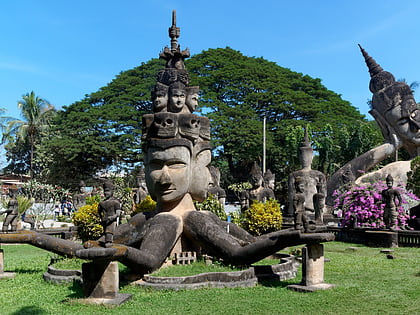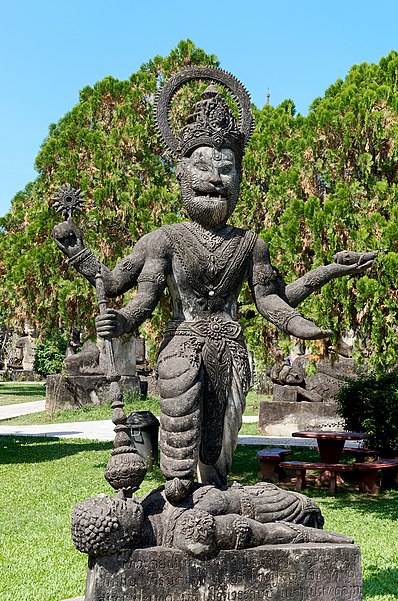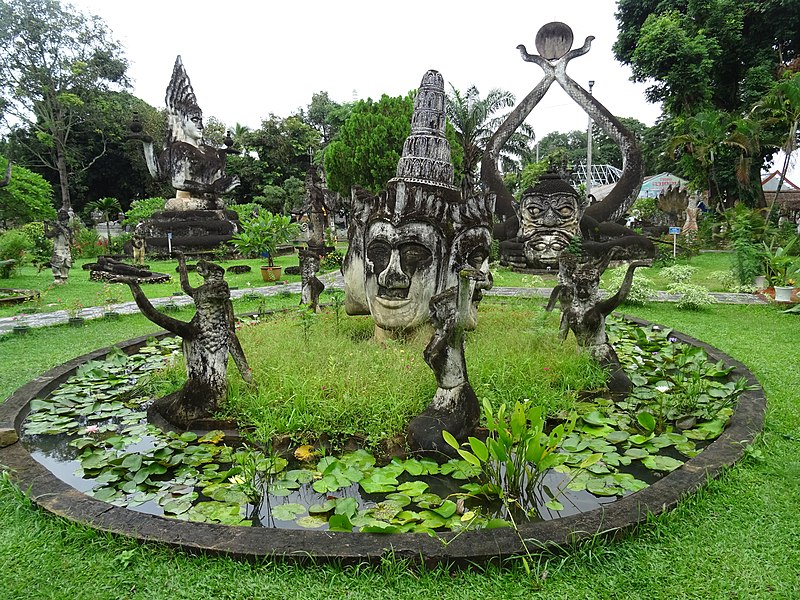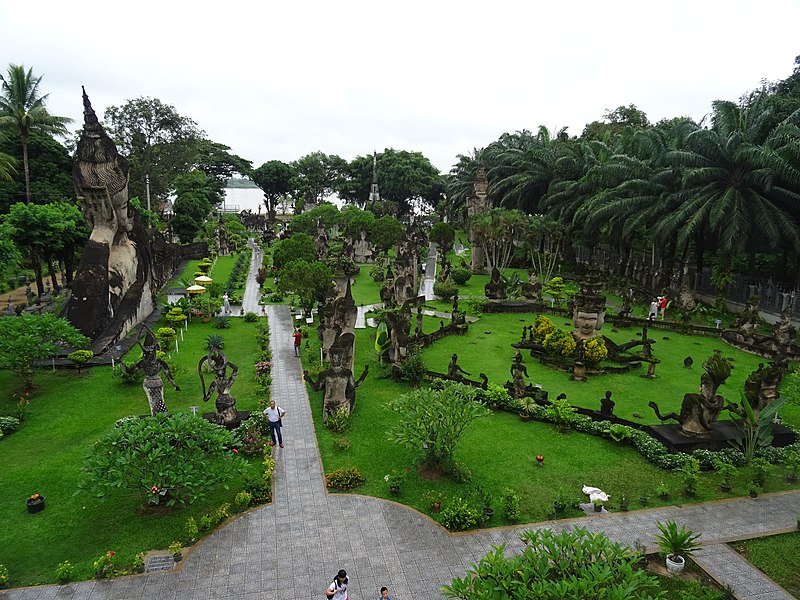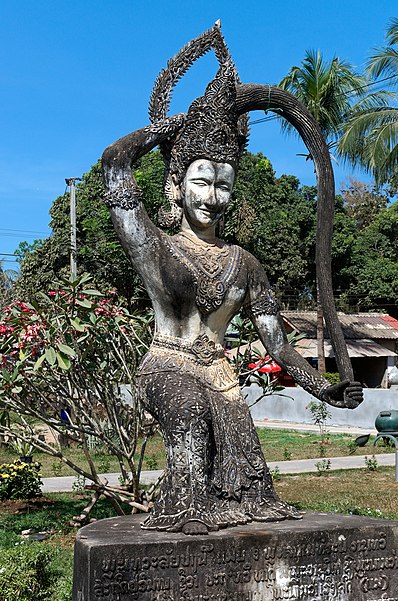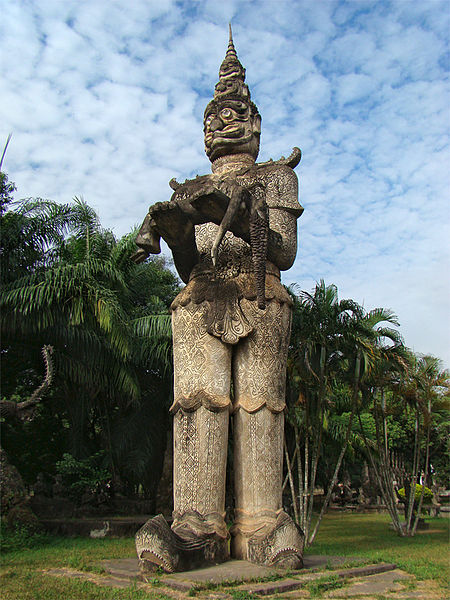Buddha Park, Vientiane
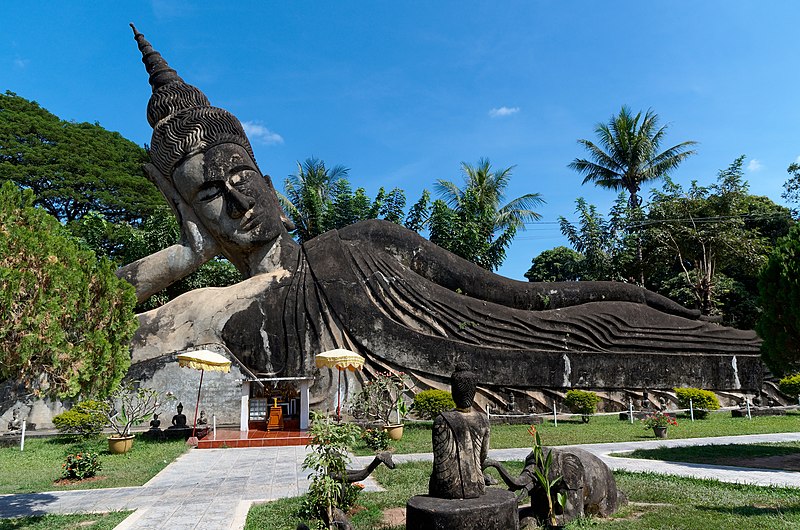
Facts and practical information
Nestled on the outskirts of Vientiane, the capital city of Laos, lies a remarkable and unconventional attraction: Buddha Park. Also known as Xieng Khuan, which means "Spirit City," this park is an otherworldly landscape filled with over 200 Hindu and Buddhist statues. The park was created in 1958 by Luang Pu Bunleua Sulilat, a monk who studied both Hinduism and Buddhism, which is reflected in the eclectic mix of religious iconography.
Buddha Park is not a temple ground but a sculpture park that sprawls over a lush meadow by the Mekong River. Its most notable feature is the enormous reclining Buddha, measuring 40 meters in length, which immediately captures the attention of visitors upon entry. The statues are made from reinforced concrete and exhibit a range of expressions and postures, depicting various deities, demons, animals, and humans.
One of the park's unique structures is a three-story spherical sculpture meant to represent the earth, heaven, and hell. Visitors can enter through the mouth of a demon to explore the interior, which is adorned with sculptures and offers a viewpoint from the top that overlooks the entire park.
The creation of the park was Sulilat's endeavor to fuse the imagery and philosophies of Hinduism and Buddhism, making it a visual representation of his spiritual beliefs. The statues are not ancient; however, they are made to look as though they have been part of the landscape for centuries, giving the park an aura of timeless mysticism.
Buddha Park is open to the public and attracts both locals and tourists who come to marvel at the unusual and serene tableaux. The park is easily accessible by tuk-tuk or bus from Vientiane and offers a tranquil escape from the bustling city life. Visitors can wander among the statues, picnic, or merely sit and absorb the peaceful atmosphere.
Vientiane
